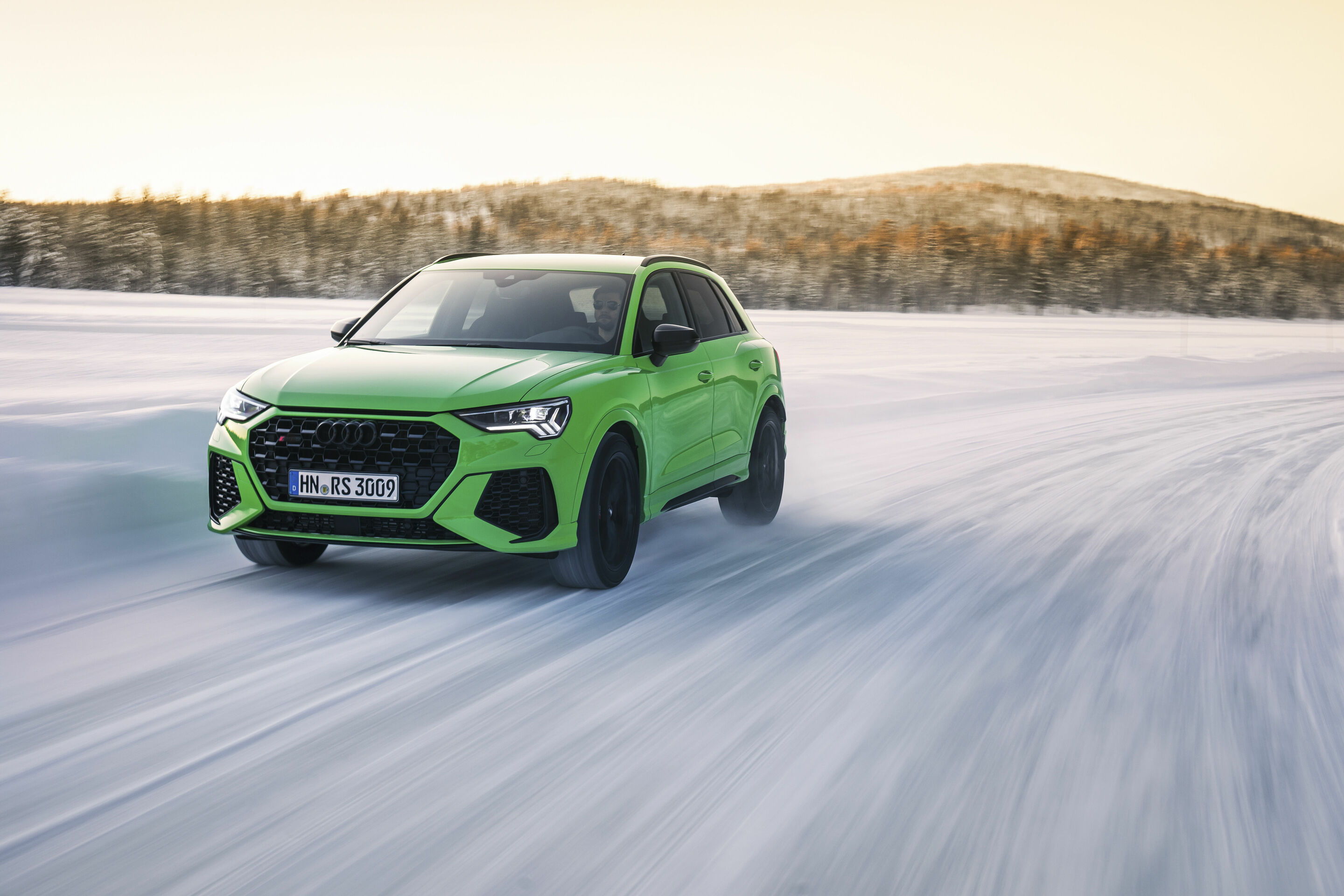Transmission
Back to overviewIn the RS Q3** and the RS Q3 Sportback**, the power of the five-cylinder engine is transmitted as standard via a seven-speed S tronic to the quattro permanent all-wheel drive. The lower gears of the compact dual-clutch transmission are dynamically short, while the seventh gear has a long ratio to reduce fuel consumption. A heat exchanger conditions the transmission oil; the bevel-gearing to the prop shaft weighs 2 kg (4.4 lbs) less than its predecessor.
The driver can let the seven-speed S tronic operate automatically or can change gear themselves using the selector lever or the steering wheel shift paddles. There is also a choice of two driving programs in automatic mode. In D mode, the engine is optimized for everyday traffic. In S mode, the engine is designed for more agility and the revs are higher. In all cases, gear shifts are performed within hundredths of a second and almost imperceptibly. Launch Control enables starts with optimum traction.
Variable power distribution: the quattro drive
The quattro permanent all-wheel drive combines dynamism and stability. Its central component is the electronically regulated and hydraulically actuated multi-plate clutch that is installed on the rear axle in the interest of weight distribution. The multi-plate clutch distributes the drive force to the front and rear axles at lightning speed and as required, using a software tailored specifically to the RS models. Depending on the driving style and coefficient of friction, between 50 and 100 percent of the available drive force can be sent to the rear axle. An electrically driven pump presses the plates in the clutch together with a maximum oil pressure of 40 bar. As soon as the grip on the road is reduced or the driver adopts a more sporty driving style, the clutch can direct some of the drive force to the rear axle when turning into the corner.
Tuned specifically to the RS: stabilization control with two modes
The Electronic Stabilization Control (ESC) and the anti-slip control have been tuned specifically to the RS. In addition to the full mode, there is also a sport mode in which the ESC intervenes later. This provides additional driving pleasure and also enables controlled drifting on low-friction road surfaces with optimum framework conditions. If the driver pushes the ESC button for longer than three seconds, the ESC switches off completely to allow particularly sporty handling.
At the limits of dynamic driving performance, the quattro drive works closely together with the wheel-selective torque control. When driving with a sporty style, it brakes both the wheels on the inside of the curve very slightly, thereby increasing the drive torque on the wheels on the outside of the curve with the higher wheel load. The difference in drive forces turns the car into the curve, allowing the car to follow the steering angle precisely. The result: precise, agile and neutral handling.
* Fuel/power consumption and CO2 emission figures given in ranges depend on the tires/wheels used as well as the selected equipment
** The collective fuel consumption values of all models named and available on the German market can be found in the list provided at the end of this press information.
All terms in blue in the text are explained in detail in the technology lexicon at www.audi-mediacenter.com/en/technology-lexicon.
The specified equipment, data and prices relate to the model range on offer in Germany. Subject to changes and errors. Figures on the fuel consumption and the CO2-emissions (found from page 2 onwards) vary in case of given ranges depending on the used combination of wheels/tires.
